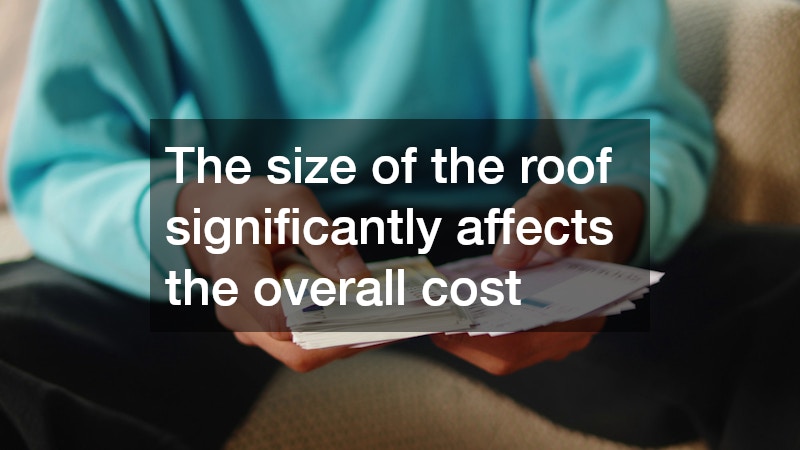Learn the essentials of commercial roofing and why every business owner should be informed about it to ensure the protection, value, and sustainability of their properties. Commercial roofing is a critical component of property management and affects not only the safety of the structure but also its financial value and operational sustainability. Making informed decisions about roofing materials, maintenance, and costs can help businesses maintain their properties effectively.
1. What Are the Most Common Commercial Roofing Materials?
An overview of commercial roofing starts with understanding the popular materials such as TPO, EPDM, and metal roofs. Thermoplastic Polyolefin (TPO) is known for its energy efficiency and heat-reflective properties, making it a favorite for environmentally-conscious businesses.
EPDM roofs, known for durability and cost-effectiveness, are exceptionally resilient against extreme weather conditions and offer excellent longevity.
Metal roofing offers robust protection and is renowned for its longevity and low maintenance requirements. However, it is generally more expensive to install compared to other materials. Each option comes with a different set of benefits that can suit various business needs based on location, climate, and business operations.
While TPO provides superior energy efficiency, EPDM is praised for its simplicity and durability, and metal shines in longevity and resilience. Business owners should evaluate the environmental benefits, initial costs, and long-term value of these materials. A wise choice today can mitigate future costs and enhance the building’s market value.
The selection of roofing material hinges on several pivotal factors, including climate, building architecture, and budget constraints. Climate considerations dictate whether a roofing material should be reflective to mitigate heat or robust to withstand snow loads. Building design and structure also influence the compatibility of roofing options, requiring careful alignment with engineering standards.
Budget constraints often play a decisive role, with cost-effective solutions like EPDM offering an economical yet durable option. Though upfront investment might seem high, the long-term savings and energy efficiency gains are invaluable. Business owners must weigh upfront costs against the long-term impact and potential savings in utility expenses.
2. How Much Does Commercial Roofing Cost?
Commercial roofing costs are influenced by several key factors, notably material choice, labor expenses, and the roof’s size and complexity. Material type impacts the base price, with metal generally commanding higher initial costs but compensating with durability and reduced maintenance. Labor costs can vary based on location, contractor experience, and project timeline.
The size of the roof significantly affects the overall cost, as larger roofs require more materials and labor inputs. Complexity in design, such as unusual roof shapes or additional features like skylights, can also escalate costs. Businesses should obtain detailed quotes and conduct cost comparisons to understand financial commitments and make informed decisions.
In addition to these factors, geographical location can influence cost due to the local market and regulations. Urban areas may encounter higher labor costs compared to rural regions. Businesses should plan for contingency funds to accommodate any unforeseen expenses or adjustments during the project.
Choosing a reliable roofing contractor is critical to ensuring quality work and fair pricing. Business owners should seek out contractors with solid reputations, verified by references and positive reviews from previous clients. Checking credentials and certifications can also guard against substandard workmanship and assure compliance with industry standards.
Engaging multiple contractors to obtain comprehensive quotes provides a clearer picture of market rates and project expectations. It’s important to evaluate contractors based on professionalism, transparency, and willingness to discuss project details. A detailed contract outlining the scope of work, timeline, costs, and warranties helps prevent misunderstandings and protects both parties.
Open communication and collaboration with contractors can support a smooth project execution, meeting business requirements effectively. Clients should stay proactive, overseeing project developments and addressing any issues promptly. Ultimately, the choice of contractor can significantly influence the quality, efficiency, and budget adherence of the roofing project.
3. What Are the Best Practices for Commercial Roof Maintenance?
Regular inspections from a commercial roofer form the backbone of effective maintenance, allowing early detection of potential issues. Identifying problems such as leaks, cracks, or structural weaknesses before they escalate can save significant repair costs and extend the roof’s life. Engaging professional inspection services ensures comprehensive evaluations and accurate assessments.
Incorporating biannual inspections, at a minimum, can align with seasonal changes, targeting specific challenges posed by different weather conditions. Inspections should include a thorough check of drainage systems, membrane conditions, and peripheral installations. These steps help in proactively addressing vulnerabilities and avoiding costly emergencies.
Detailed inspection reports help guide maintenance plans and prioritize actions needed for optimal performance. Businesses should maintain detailed records of inspections, repairs, and maintenance activities to ensure continuity and informed decision-making. Commitment to regular inspections translates directly into improved roof longevity and reliability.
Adopting preventive maintenance strategies is key to preserving roof health and functionality. Regular debris removal prevents clogging of drainage systems and reduces water ponding risks, which can damage roofing materials over time. Scheduled gutter cleaning is paramount, particularly after heavy storms, to avoid water overflow and damage.
Routine checks for physical damage or wear, especially after severe weather, ensure timely response to issues like loose flashing or membrane tears. Incorporating a maintenance schedule that includes necessary touch-ups and small repairs can avert bigger problems. Businesses should also keep vegetation growth in check around the roofing area, minimizing potential damage caused by roots or fallen branches.
Business owners who remain proactive in commercial roofing management can expect savings, operational continuity, and enhanced asset value. Knowledge of roofing intricacies empowers decision-making and aligns business goals with practical solutions. Maintaining a dynamic and informed approach to roofing considerations secures not only the structural integrity but also the financial and operational health of the business enterprise.
In crafting a roofing strategy, businesses should remain flexible and responsive to evolving technologies and market conditions. Adopting an integrated approach that emphasizes quality, sustainability, and economic viability ensures continued success. Ultimately, informed roofing choices safeguard future growth and prosperity for any commercial establishment.




